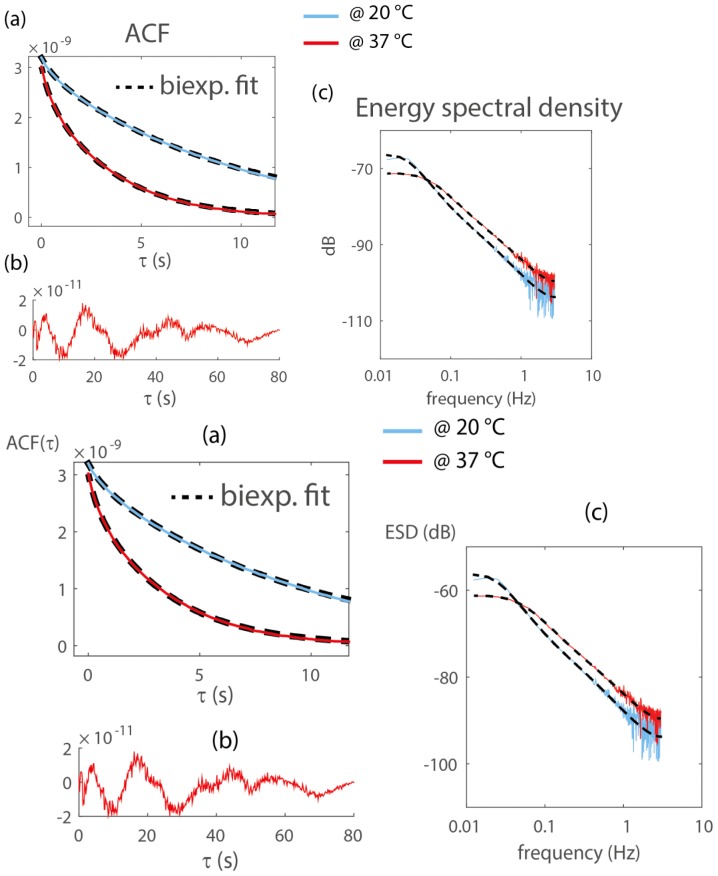Fig. 4.
(a) Spatially-averaged ACF function of the same spheroid at 37°C and 20°C. The ACF are not normalized to illustrate that increased intracellular motion does not modify the near zero lag amplitude, which is a measure of signal strength. Temperature control at 37°C increases α (0.08 to 0.13), and reduce the fast T1 (0.7 to 0.36 s) and slow T2 (9 to 3.4 s) decorrelation times. (b) Typical residual from the biexponential fit, which show fluctuations of normalized amplitude 1%. (c) Same data as (a) in the frequency domain. Increased intracellular motion at 37° increase the slope of the spectrum in the [0.1-1] Hz band, and its high frequency plateau by 5dB.

